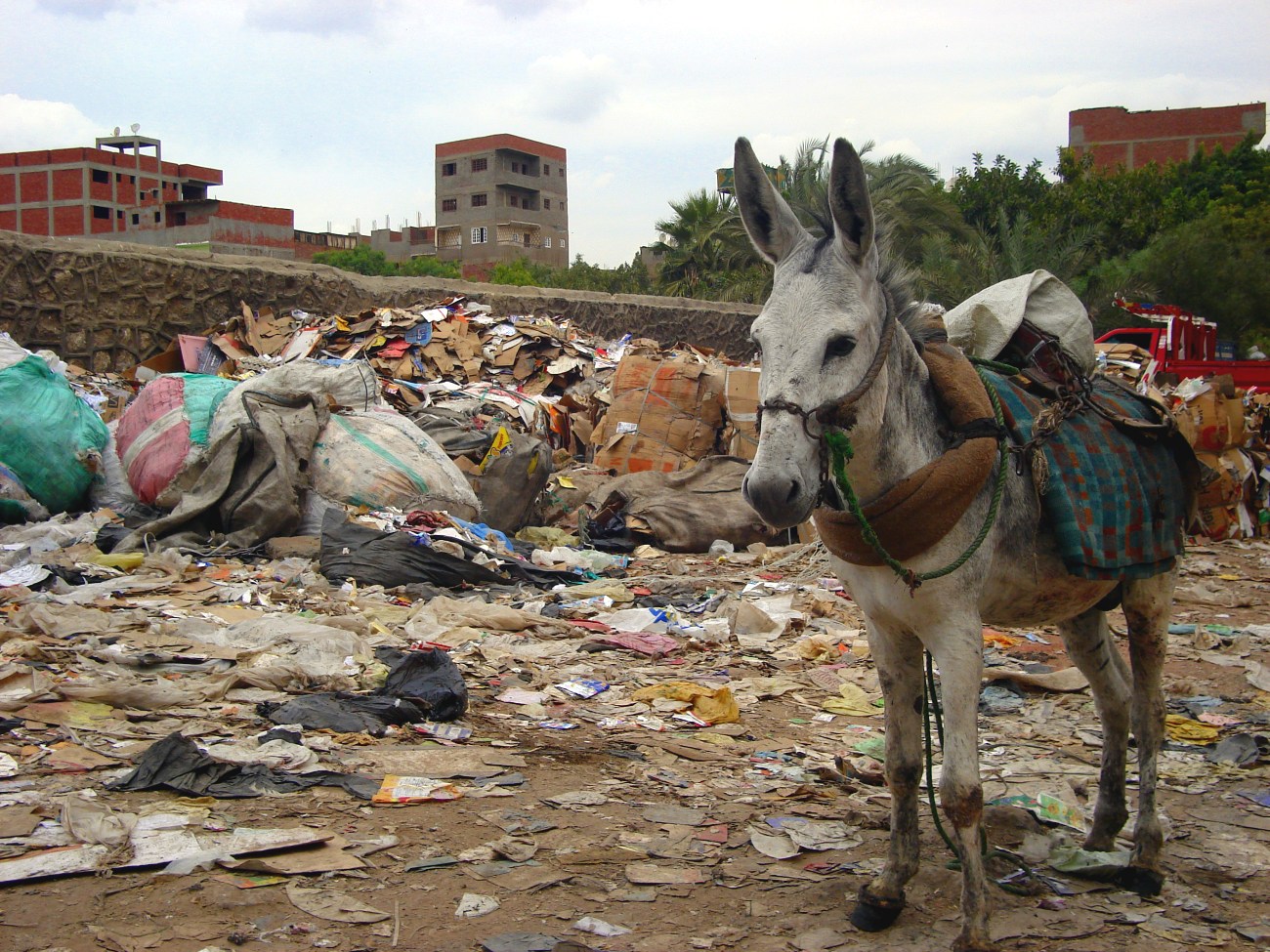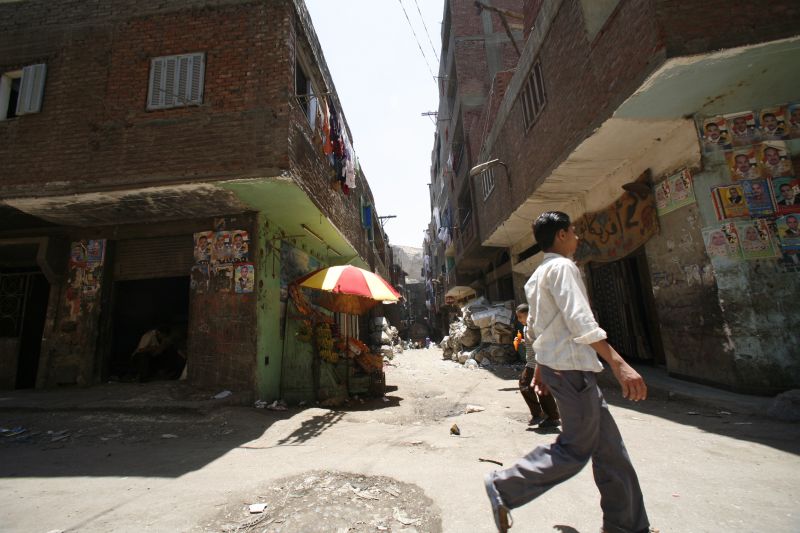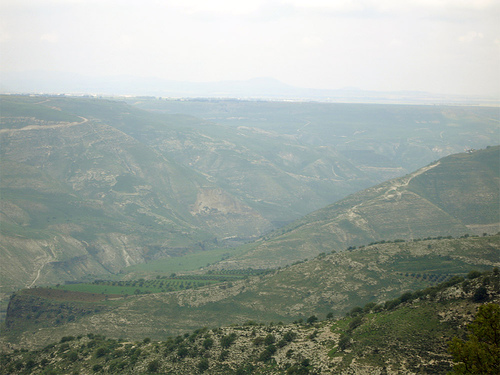|
Mokattam
The Mokattam ( arz, المقطم , also spelled Muqattam), also known as the Mukattam Mountain or Hills, is the name of a range of hills and a suburb in them, located in southeastern Cairo, Egypt. Etymology The Arabic name ''Mokattam'' means cut off or broken off and apparently refers to how the low range of hills is divided into three sections. Paul Casanova advocated the idea that it's a corruption of an older name Maqaduniya (), mentioned in Medieval Arabic sources. Landform The highest segment is a low mountain landform called Moqattam Mountain. In the past the low mountain range was an important ancient Egyptian quarry site for limestone, used in the construction of temples and pyramids. Settlement The hills are in the region of ancient Fustat, the new capital founded by 'Amr ibn al-'As after the Muslim conquest of Egypt in 642 CE. The Zabbaleen people, who are an integral part of collecting and processing Cairo's municipal solid waste, live in Manshiyat Naser, ... [...More Info...] [...Related Items...] OR: [Wikipedia] [Google] [Baidu] |
Zabbaleen
The Zabbaleen ( arz, زبالين ', ) is a word which literally means "garbage people" in Egyptian Arabic.Assaad, Ragui. (1996) Formalizing the Informal? The Transformation of Cairo's Refuse Collection System. ''Journal of Planning Education & Research'', vol. 16, p. 118. The contemporary use of the word in Egyptian Arabic is to mean "garbage collectors". In cultural contexts, the word refers to teenagers and adults who have served as Cairo's informal garbage collectors since approximately the 1940s. The Zabbaleen (singular: ', ) are also known as Zarraba (singular: Zarrab), which means "pig-pen operators." The word ' came from the Egyptian Arabic word ' (, ) which means "garbage". Spread out among seven different settlements scattered in the Greater Cairo Urban Region, the Zabbaleen population is between 50,000 and 70,000.Fahmi, Wael & Sutton, Keith. (2006) Cairo's Zabbaleen Garbage Recyclers: Multi-nationals’ Takeover and State Relocation Plans.''Habitat International'', vol ... [...More Info...] [...Related Items...] OR: [Wikipedia] [Google] [Baidu] |
City Of The Dead (Cairo)
The City of the Dead, or Cairo Necropolis, also referred to as the Qarafa ( ar, القرافة, al-Qarafa; locally pronounced as ''al-'arafa''), is a series of vast Islamic-era necropolises and cemetery, cemeteries in Cairo, Egypt. They extend to the north and to the south of the Cairo Citadel, below the Mokattam, Mokattam Hills and outside the historic city walls, covering an area roughly 4 miles long. They are included in the UNESCO World Heritage Site of "Islamic Cairo, Historic Cairo". The necropolis is separated roughly into two regions: the Northern Cemetery to the north of the Citadel (also called the Eastern Cemetery or ''Qarafat ash-sharq'' in Arabic because it is east of the old city walls), and the older Southern Cemetery to the south of the Citadel. There is also another smaller cemetery north of Bab al-Nasr (Cairo), Bab al-Nasr. The necropolis that makes up "the City of the Dead" has been developed over many centuries and contains both the graves of Cairo's common p ... [...More Info...] [...Related Items...] OR: [Wikipedia] [Google] [Baidu] |
Maqaduniya
Maqaduniya () is a region in Medieval Egypt comprising Fustat, Ain Shams, Giza and Memphis. Name It is unknown if Egyptian Maqaduniya is related to Balkan region of the same name. Yaqut al-Hamawi in his Kitāb Mu'jam al-Buldān says:''"Maqaduniya is the name of Misr in Ancient Greek."'' Paul Casanova connects Maqaduniya to one of the Ancient Egyptian names of Memphis – ''Makha-to-ui'' ('','' reconstructed pronunciation: )''.'' It could be also related to the name of Mokattam Hills which Casanova derives from a denomination of the compound Heliopolite deity (''Hor)-em-akhet-Atum (Horus of the Horizon–Atum Atum (, Egyptian: ''jtm(w)'' or ''tm(w)'', ''reconstructed'' ; Coptic ''Atoum''), sometimes rendered as Atem or Tem, is an important deity in Egyptian mythology. Name Atum's name is thought to be derived from the verb ''tm'' which means 'to com ...)'', the compound which is also present in one of the Sphinx's names – Harmachis ( ''Harmashi''). References {{re ... [...More Info...] [...Related Items...] OR: [Wikipedia] [Google] [Baidu] |
Geography Of Cairo
Cairo ( ; ar, القاهرة, al-Qāhirah, ) is the capital of Egypt and its largest city, home to 10 million people. It is also part of the largest urban agglomeration in Africa, the Arab world and the Middle East: The Greater Cairo metropolitan area, with a population of 21.9 million, is the 12th-largest in the world by population. Cairo is associated with ancient Egypt, as the Giza pyramid complex and the ancient cities of Memphis and Heliopolis are located in its geographical area. Located near the Nile Delta, the city first developed as Fustat, a settlement founded after the Muslim conquest of Egypt in 640 next to an existing ancient Roman fortress, Babylon. Under the Fatimid dynasty a new city, ''al-Qāhirah'', was founded nearby in 969. It later superseded Fustat as the main urban centre during the Ayyubid and Mamluk periods (12th–16th centuries). Cairo has long been a centre of the region's political and cultural life, and is titled "the city of a thousand minare ... [...More Info...] [...Related Items...] OR: [Wikipedia] [Google] [Baidu] |
Cairo
Cairo ( ; ar, القاهرة, al-Qāhirah, ) is the capital of Egypt and its largest city, home to 10 million people. It is also part of the largest urban agglomeration in Africa, the Arab world and the Middle East: The Greater Cairo metropolitan area, with a population of 21.9 million, is the 12th-largest in the world by population. Cairo is associated with ancient Egypt, as the Giza pyramid complex and the ancient cities of Memphis and Heliopolis are located in its geographical area. Located near the Nile Delta, the city first developed as Fustat, a settlement founded after the Muslim conquest of Egypt in 640 next to an existing ancient Roman fortress, Babylon. Under the Fatimid dynasty a new city, ''al-Qāhirah'', was founded nearby in 969. It later superseded Fustat as the main urban centre during the Ayyubid and Mamluk periods (12th–16th centuries). Cairo has long been a centre of the region's political and cultural life, and is titled "the city of a thousand m ... [...More Info...] [...Related Items...] OR: [Wikipedia] [Google] [Baidu] |
List Of Types Of Limestone
This is a list of types of limestone arranged according to location. It includes both formal stratigraphic unit names and less formal designations. Africa Egypt *Tura limestone, used for the Great Pyramid casing stones *Mokattam limestone; Great Pyramid core stones and head of the Great Sphinx are of the "Member III" stratum * Galala marble (a type of limestone, not a true marble) Asia India * * Israel (West Bank) * * Europe Austria * Belgium *, (not a "true marble"; Devonian limestone) * * Croatia * France * *, or "Paris stone" (city buildings are widely faced with it) **, or Oise, limestone (variety of Lutetian) * *, in the Loire Valley Germany * * Gibraltar * Ireland * , not a "true marble"; fossiliferous Carboniferous limestone. Italy * , not a "true marble"; fossiliferous limestone United Kingdom England: * (not a "true marble"; Carboniferous limestone) * * * , the famous London Stone is made of this. * (not a "true slate"; thin-bedded limestone ... [...More Info...] [...Related Items...] OR: [Wikipedia] [Google] [Baidu] |
Garbage City
Manshiyat Naser ( arz, منشية ناصر ; , "the Christian suburb", ) is a ward (''kism'') of Cairo, Egypt. It covers 5.54 square kilometers, was home to 262,050 people in the 2006 census, up from 168,425 in 1996 census, and borders Nasr City to the east, central Cairo districts to the west, and Khalifa ward to the south. It is famous for the Garbage City quarter, which is a slum settlement at the far southern end of Manshiyat Naser, at the base of Mokattam hills on the outskirts of Cairo. Being Cairo's largest concentration of Zabbaleen garbage collectors, its economy revolves around the collection and recycling of the city's garbage. Although Manshiyat Naser has streets, shops, and apartments as other areas of the city, it lacks infrastructure and often has no running water, sewers, or electricity. Coptic district Coptic Christians were originally the predominant inhabitants of Manshiyat Naser, though in recent decades the area's Muslim population has grown. The Christia ... [...More Info...] [...Related Items...] OR: [Wikipedia] [Google] [Baidu] |
Manshiyat Naser
Manshiyat Naser ( arz, منشية ناصر ; , "the Christian suburb", ) is a ward (''kism'') of Cairo, Egypt. It covers 5.54 square kilometers, was home to 262,050 people in the 2006 census, up from 168,425 in 1996 census, and borders Nasr City to the east, central Cairo districts to the west, and Khalifa ward to the south. It is famous for the Garbage City quarter, which is a slum settlement at the far southern end of Manshiyat Naser, at the base of Mokattam hills on the outskirts of Cairo. Being Cairo's largest concentration of Zabbaleen garbage collectors, its economy revolves around the collection and recycling of the city's garbage. Although Manshiyat Naser has streets, shops, and apartments as other areas of the city, it lacks infrastructure and often has no running water, sewers, or electricity. Coptic district Coptic Christians were originally the predominant inhabitants of Manshiyat Naser, though in recent decades the area's Muslim population has grown. The Christia ... [...More Info...] [...Related Items...] OR: [Wikipedia] [Google] [Baidu] |
'Amr Ibn Al-'As
( ar, عمرو بن العاص السهمي; 664) was the Arab commander who led the Muslim conquest of Egypt and served as its governor in 640–646 and 658–664. The son of a wealthy Qurayshite, Amr embraced Islam in and was assigned important roles in the nascent Muslim community by the Islamic prophet Muhammad. The first caliph Abu Bakr () appointed Amr as a commander of the conquest of Syria. He conquered most of Palestine, to which he was appointed governor, and led the Arabs to decisive victories over the Byzantines at the battles of Ajnadayn and Yarmouk in 634 and 636. Amr launched the conquest of Egypt on his own initiative in late 639, defeating the Byzantines in a string of victories ending with the surrender of Alexandria in 641 or 642. It was the swiftest of the early Muslim conquests. This was followed by westward advances by Amr as far as Tripoli in present-day Libya. In a treaty signed with the Byzantine governor Cyrus, Amr guaranteed the security of Egypt ... [...More Info...] [...Related Items...] OR: [Wikipedia] [Google] [Baidu] |
Egyptian Temple
Egyptian temples were built for the official worship of the gods and in commemoration of the pharaohs in ancient Egypt and regions under Egyptian control. Temples were seen as houses for the gods or kings to whom they were dedicated. Within them, the Egyptians performed a variety of rituals, the central functions of Egyptian religion: giving offerings to the gods, reenacting their mythological interactions through festivals, and warding off the forces of chaos. These rituals were seen as necessary for the gods to continue to uphold ''maat'', the divine order of the universe. Housing and caring for the gods were the obligations of pharaohs, who therefore dedicated prodigious resources to temple construction and maintenance. Out of necessity, pharaohs delegated most of their ritual duties to a host of priests, but most of the populace was excluded from direct participation in ceremonies and forbidden to enter a temple's most sacred areas. Nevertheless, a temple was an important r ... [...More Info...] [...Related Items...] OR: [Wikipedia] [Google] [Baidu] |
Pyramids
A pyramid (from el, πυραμίς ') is a structure whose outer surfaces are triangular and converge to a single step at the top, making the shape roughly a pyramid in the geometric sense. The base of a pyramid can be trilateral, quadrilateral, or of any polygon shape. As such, a pyramid has at least three outer triangular surfaces (at least four faces including the base). The square pyramid, with a square base and four triangular outer surfaces, is a common version. A pyramid's design, with the majority of the weight closer to the ground and with the pyramidion at the apex, means that less material higher up on the pyramid will be pushing down from above. This distribution of weight allowed early civilizations to create stable monumental structures. Civilizations in many parts of the world have built pyramids. The largest pyramid by volume is the Great Pyramid of Cholula, in the Mexican state of Puebla. For thousands of years, the largest structures on Earth were pyramid ... [...More Info...] [...Related Items...] OR: [Wikipedia] [Google] [Baidu] |
Fustat
Fusṭāṭ ( ar, الفُسطاط ''al-Fusṭāṭ''), also Al-Fusṭāṭ and Fosṭāṭ, was the first capital of Egypt under Muslim rule, and the historical centre of modern Cairo. It was built adjacent to what is now known as Old Cairo by the Rashidun Muslim general 'Amr ibn al-'As immediately after the Muslim conquest of Egypt in AD 641, and featured the Mosque of Amr, the first mosque built in Egypt. The city reached its peak in the 12th century, with a population of approximately 200,000.Williams, p. 37 It was the centre of administrative power in Egypt, until it was ordered burnt in 1168 by its own vizier, Shawar, to keep its wealth out of the hands of the invading Crusaders. The remains of the city were eventually absorbed by nearby Cairo, which had been built to the north of Fustat in 969 when the Fatimids conquered the region and created a new city as a royal enclosure for the Caliph. The area fell into disrepair for hundreds of years and was used as a rubbish dump ... [...More Info...] [...Related Items...] OR: [Wikipedia] [Google] [Baidu] |



_-_TIMEA.jpg)





